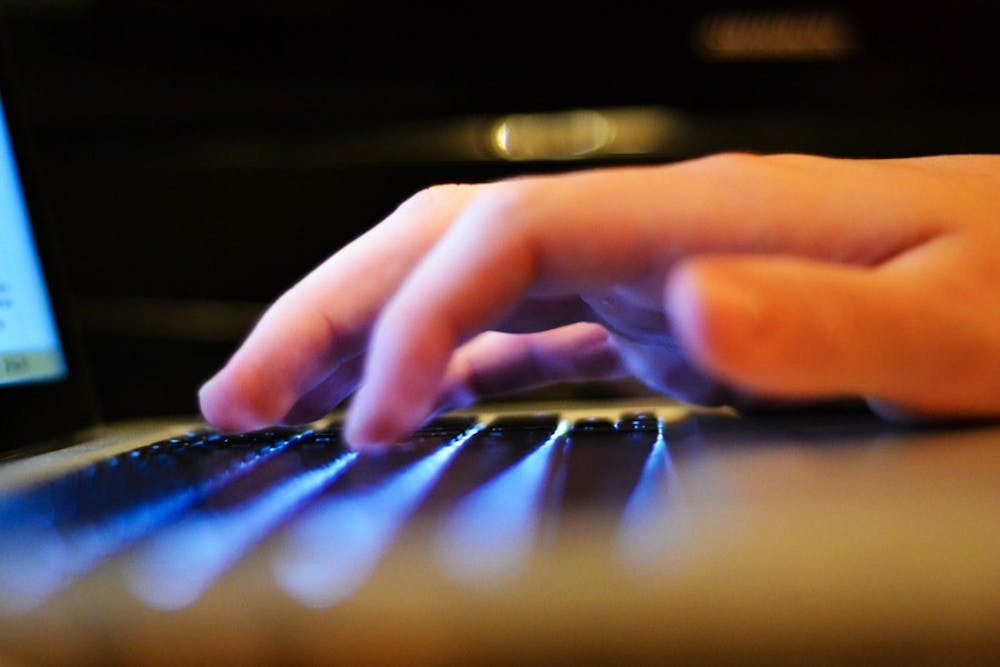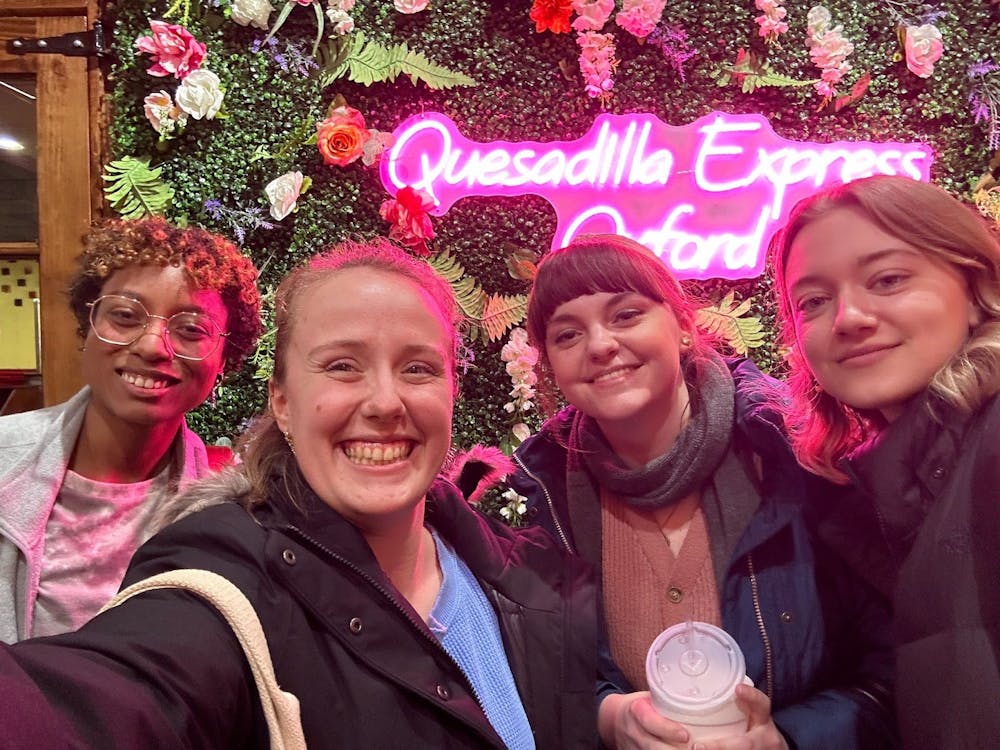By Emily Williams, For The Miami Student
Snapchat, the highly popular smartphone app, has introduced a new feature, a peer-to-peer instant payment service they've dubbed "Snapcash."
Thanks to Snapchat, it has become normal for people to stop mid-walk to snap a selfie, whip out their phones to record snippets of their favorite song at a concert or to surreptitiously make funny faces at their front camera while studying in the library. Despite the app's ability to change the way smartphone users communicate, many devoted Snapchatters remain skeptical about the new payment feature.
The company announced the launch of Snapcash Nov. 17 in the form of an elaborate song-and-dance commercial promoting the convenience of the new payment service. Clad in dollar signs and shades of green and gold, performers wave fake coins and sing about how easy it is to use.
"Swipe three fingers and make it rain," they sing.
A jolly old man with an ample white beard and a golden cane assures viewers that any financial information shared with Snapchat will be saved securely for future transactions.
"A wise investment at any age," he says.
However, only those 18 or older can only use the payment feature, a factor that could be a concern for the success of the service since more than half of Snapchat's over 100 million active users are minors.
The transactions will be handled by Square, a financial company headed by Twitter co-founder Jack Dorsey. To use Snapcash, users must make an account through Square and submit their MasterCard or Visa debit card information. According to the newly partnered companies, all of the financial exchanges will be handled exclusively by Square, and no personal financial information will be stored on Snapchat's servers.
Despite this fact, some people are still concerned about disclosing their information for Snapcash because of security issues Snapchat has experienced in the past.
After having her Snapchat account hacked, senior Chloe Hazen became wary about the app's security. A Snapchat was sent out to her friends saying that her private images could be viewed online, citing the name of a website. To her relief, her pictures were not in fact on the Internet, but the incident still changed her perspective of the service's ability to protect its users.
"I just haven't had a really good situation with Snapchat," she said. "I wouldn't want to give them any of my debit card information based on that."
Enjoy what you're reading?
Signup for our newsletter
Just this October, thousands of private images were leaked from Snapsaved, a site that illegally copied Snapchat's application programming interface (API), in a security breach that has been referred to as "The Snappening." Although this third party service and not Snapchat itself was hacked, some users argue that Snapchat's software should not have been so easily duplicated. Aware of possible distrust after this recent controversy, Snapchat addressed the issue of privacy in a blog post about the launch of Snapcash.
"We set out to make payments faster and more fun, but we also know that security is essential when you're dealing with money," the post reads. "Square has a ton of experience in this area and our teams have been hard at work to make Snapcash a great experience for everyone."
After starting an account, there are two ways money can be sent through Snapcash. Using the texting feature, the user types the desired amount and the app, recognizing the dollar sign, will replace the regular yellow send button with a green Snapcash icon. To use the second method, "swipe to send," the user types three dollar signs into the chat window. The screen becomes a dollar image that the user then swipes repeatedly until reaching the correct amount.
The amount that a user can send through Snapcash is initially limited to $250 a week but can be raised to up to $2,500 after verifying the Square account with a social security number and date of birth. Users can initially only receive up to $1,000 a month, but that amount can also be raised.
Once money has been sent through Snapcash, the transaction cannot be cancelled, and recipients, if they do not have a Square account, have 24 hours to sign up with their debit card information before the money is refunded.
Despite Snapchat's insistence on the security of Snapcash, users still have other worries. Many people have expressed concern for how the new service will be used since the app has been known for its use in sending and receiving explicit images. In addition, some worry that, even if Square securely stores their financial information, money can be stolen directly from the app on their phones.
First-year Mitch Zawodny, who claims to use Snapchat just as much as he texts, will not being using the payment service for that reason.
"Somebody could easily take your phone, sign into it, and send themselves money through Snapcash," he said.
Although Snapchat, a company currently valued at a whopping $10 billion, has changed the world of digital correspondence, it is still struggling to turn a profit. Hoping Snapcash will keep them on top of the ever-growing app industry, the company will especially be looking to college students for their support. Time will tell if students will be behind them, but in the meantime they'll keep trying to entice young adults with the commercial's flashy jingle that promises to make payment painless.
"Just type that dollar sign, and you'll be feeling fine."




